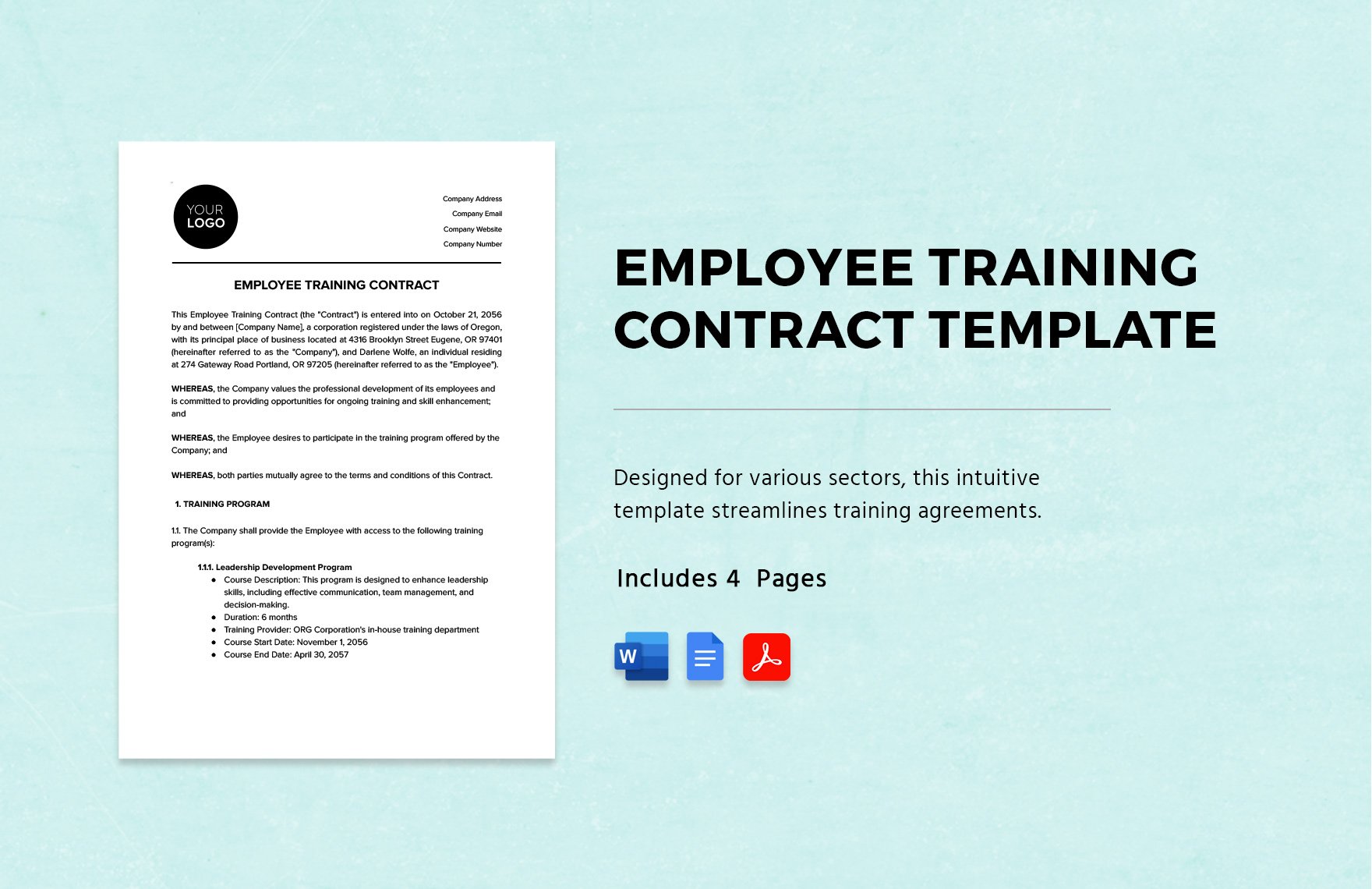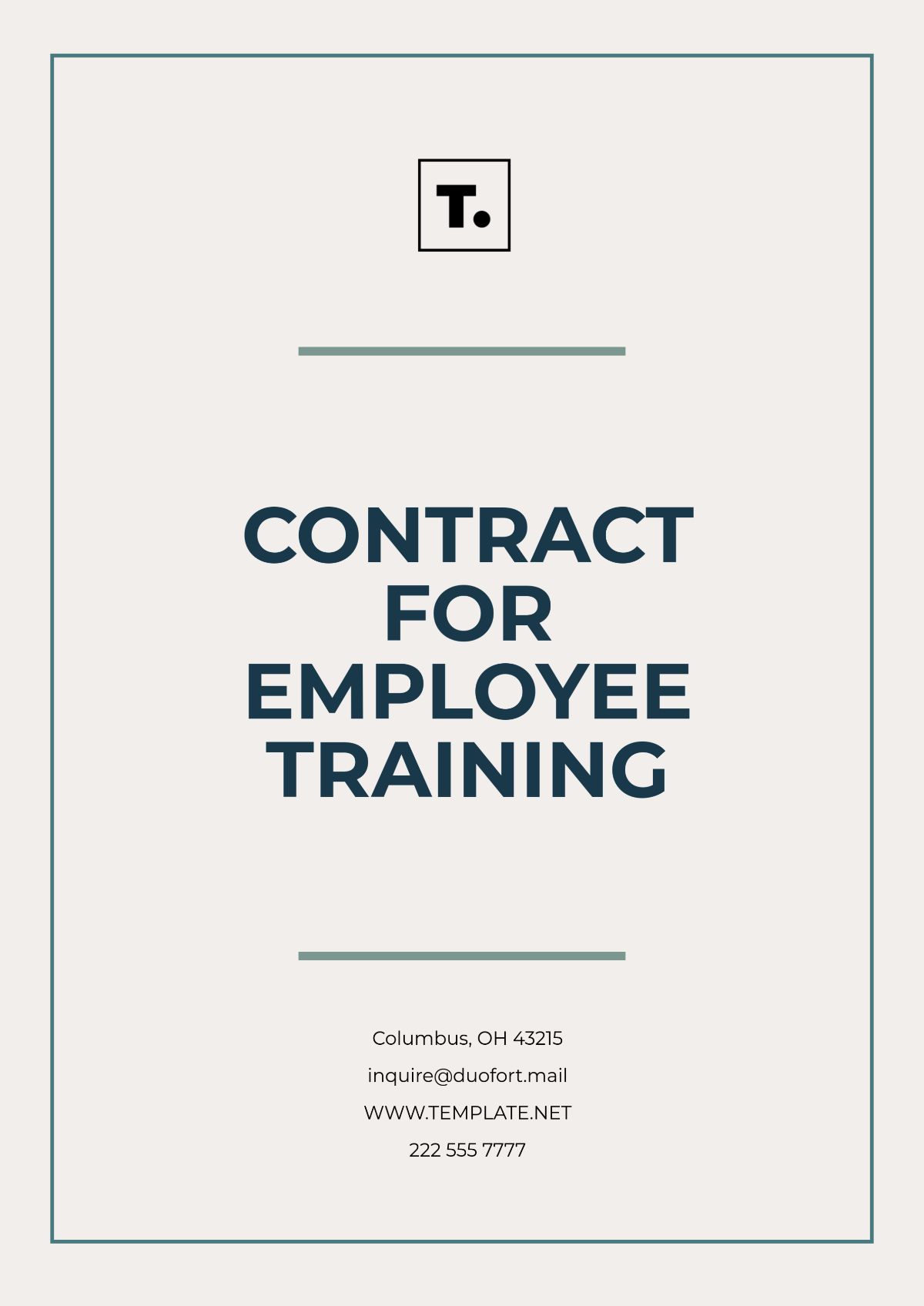The Employee Training Contract Template You Need for Your Business
Employee training is an investment, and like any investment, it needs to be protected. A well-crafted employee training contract is the key to ensuring that your investment yields the desired return. It clarifies expectations, protects your business interests, and fosters a more professional relationship with your employees. This article will guide you through the essential elements of an effective employee training contract template, helping you safeguard your investment and create a win-win situation for both your business and your employees.
Why You Need an Employee Training Contract
Investing in employee training demonstrates a commitment to employee development, boosting morale and improving overall productivity. However, without a formal agreement, your business can be vulnerable. Consider these scenarios:
- Employee Leaves Shortly After Training: You’ve spent significant resources on training, only to have the employee leave for a competitor, taking their newly acquired skills with them.
- Lack of Accountability: Without clear expectations, employees may not fully utilize their training or adhere to company policies.
- Difficulty Enforcing Agreements: Without a written contract, it can be difficult to enforce any repayment clauses or non-compete agreements.
An employee training contract addresses these potential issues head-on. It provides a legally sound framework for your training investment, protecting your business and setting clear expectations from the outset.
Essential Elements of an Employee Training Contract Template
A comprehensive employee training contract template should include the following key components:
- Parties Involved: Clearly identify the employer and the employee. Include full legal names and relevant contact information.
- Description of Training: Provide a detailed description of the training program. This includes:
- The specific skills or knowledge to be acquired.
- The duration of the training (hours, days, weeks).
- The location of the training (in-house, online, external provider).
- The training provider (if applicable).
- Cost of Training: Clearly outline the total cost of the training program. This should include:
- Tuition fees.
- Materials costs (e.g., textbooks, software licenses).
- Travel expenses (if applicable).
- Any other associated costs.
- Employee Obligations: This section is crucial for defining employee responsibilities. Include:
- Attendance Requirements: Specify the attendance expectations and consequences for missed training sessions.
- Performance Standards: Define the expected level of performance during and after the training.
- Confidentiality Agreements: Address the confidentiality of company information learned during training.
- Compliance with Company Policies: State that the employee must adhere to all company policies during and after the training.
- Employer Obligations: Outline the employer’s responsibilities, such as:
- Providing the training resources.
- Paying for the training costs (as agreed).
- Offering support and guidance to the employee.
- Repayment Clause (if applicable): This is a critical element for protecting your investment. If you are requiring repayment of training costs under specific circumstances (e.g., employee termination or resignation within a certain timeframe), you must clearly state:
- The repayment amount (either a fixed sum or a prorated amount).
- The conditions under which repayment is required.
- The repayment schedule.
- Non-Compete Clause (if applicable): If you’re providing specialized training that could give the employee a competitive advantage, consider including a non-compete clause. This should:
- Be geographically limited to a reasonable area.
- Be limited in duration (e.g., one or two years).
- Be narrowly tailored to protect your legitimate business interests.
- Term and Termination: Define the start and end dates of the agreement. Include the conditions under which either party can terminate the contract.
- Governing Law: Specify the state or jurisdiction whose laws will govern the contract.
- Signatures: Both the employer and the employee must sign and date the contract.
Creating Your Employee Training Contract Template: Best Practices
To ensure your template is effective and legally sound, consider these best practices:
- Consult with Legal Counsel: It’s highly recommended to have an attorney review your template to ensure it complies with all applicable laws and regulations in your jurisdiction.
- Be Clear and Concise: Use plain language that is easy to understand. Avoid legal jargon where possible.
- Customize for Each Training Program: While you can use a template, tailor it to the specific training program, the employee’s role, and your company’s policies.
- Obtain Employee Acknowledgement: Ensure the employee fully understands the contract’s terms before signing. Consider providing a copy of the contract in advance of training.
- Maintain Accurate Records: Keep a copy of the signed contract in the employee’s personnel file.
Leveraging Your Training Contract for Success
Beyond simply protecting your investment, your employee training contract can be a powerful tool for:
- Improving Employee Engagement: Demonstrates a commitment to employee development, fostering a positive work environment.
- Reducing Turnover: Employees are more likely to stay with a company that invests in their growth.
- Strengthening Legal Protection: Provides a strong legal basis for enforcing agreements and protecting your business interests.
- Creating a Culture of Accountability: Sets clear expectations and encourages employees to take their training seriously.
Frequently Asked Questions (FAQs)
1. What if an employee refuses to sign the training contract?
If an employee refuses to sign the contract, you have the right to reconsider offering them the training. Explain the importance of the contract and the need to protect the company’s investment. If they still refuse, you may need to decline their participation in the training.
2. Can I make an employee repay training costs if they are fired for poor performance?
This depends on your local laws and the specific wording of your contract. Generally, if poor performance is a violation of company policy or a breach of contract, you may be able to seek reimbursement. Consult with legal counsel for guidance.
3. Is a non-compete clause always enforceable?
No, non-compete clauses must be reasonable in scope, duration, and geographic reach to be enforceable. They should be narrowly tailored to protect legitimate business interests, such as trade secrets or confidential information.
4. What happens if the employee does not complete the training?
The contract should clearly state the consequences of not completing the training, which may include not receiving the training certificate or requiring the employee to repay the cost of the training.
5. Should I update my employee training contract regularly?
Yes, it’s a good practice to review and update your employee training contract periodically, especially when changes occur in the law or your company’s policies. Consult with legal counsel to ensure your contract remains compliant.
Conclusion
An employee training contract is a vital tool for any business that invests in its employees’ development. By utilizing a well-crafted template, you can safeguard your investment, set clear expectations, and create a win-win situation for both your business and your employees. Remember to consult with legal counsel and customize your template to meet your specific needs. By taking these steps, you can ensure your training programs are successful and that your business is protected.




